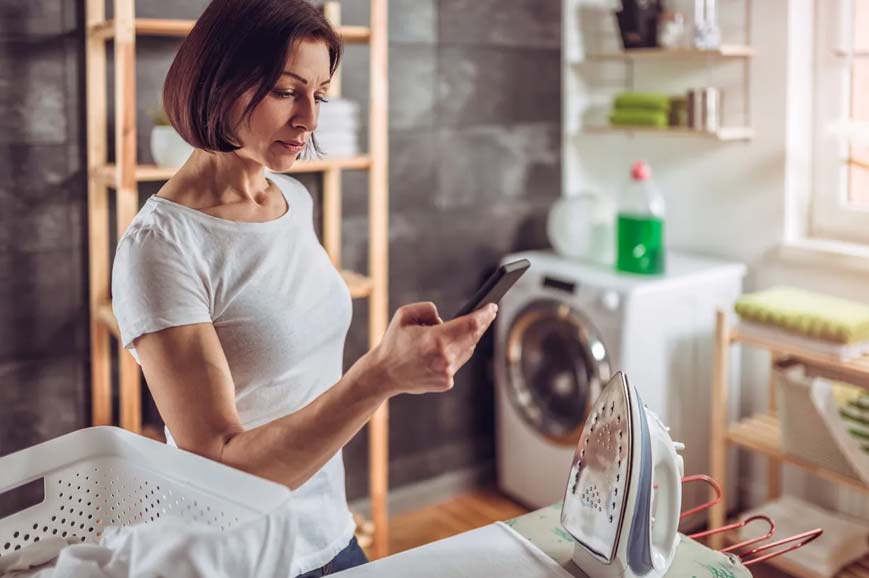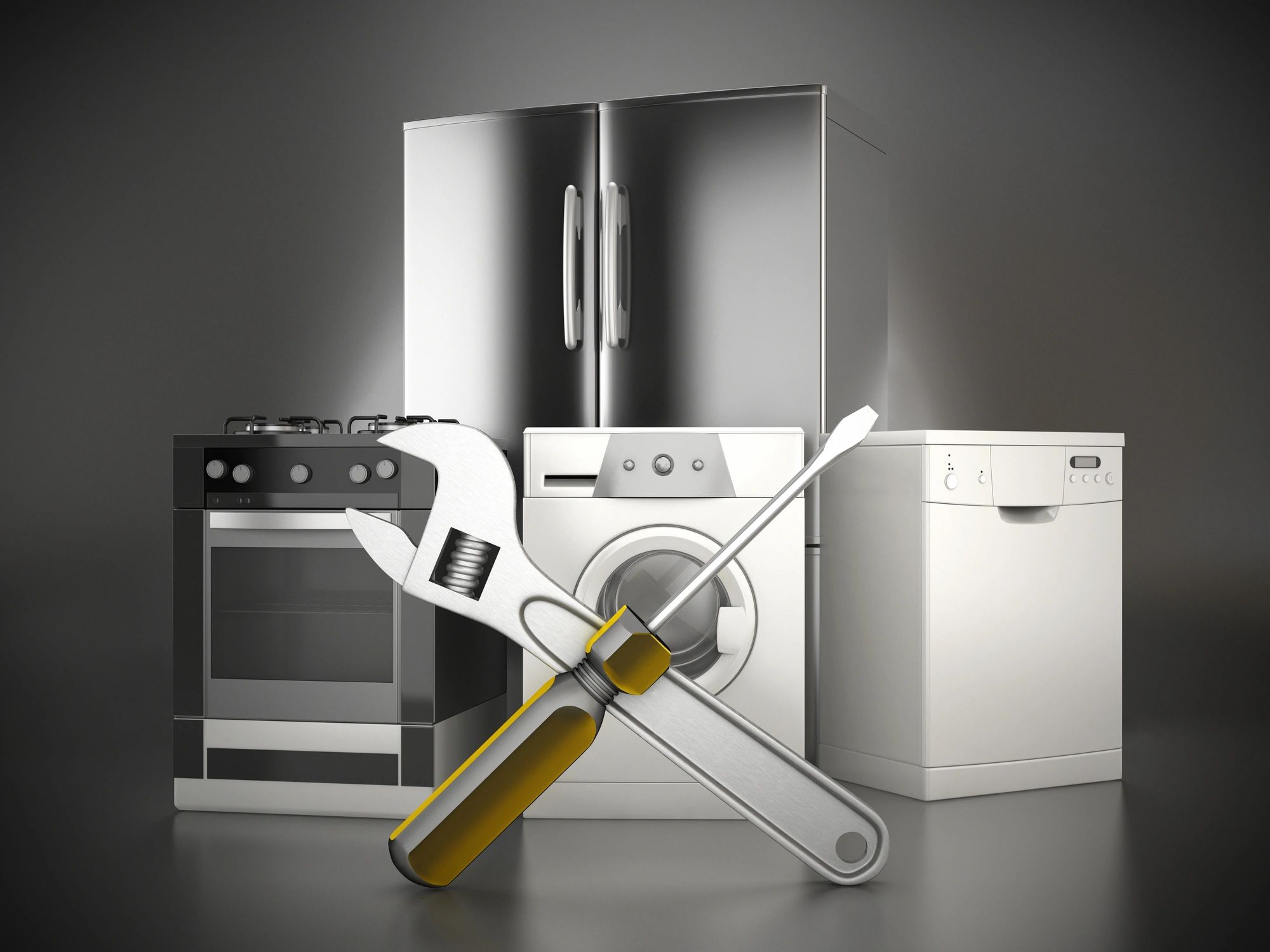The Ultimate Overview to Comprehending Appliance Repair Service in the house
When your refrigerator stops cooling down or your stove refuses to warm, it can feel frustrating. Comprehending device repair in your home can conserve you money and time. You'll learn to acknowledge signs and symptoms, make use of important tools, and follow an organized troubleshooting process. But prior to you start, there are important security precautions you need to take into account. What are the most common troubles, and exactly how can you repair them? Allow's explore the essentials.
Common Device Troubles and Their Symptoms
When your home appliances begin breaking down, it's necessary to identify the indications early on. Overlooking them can lead to larger issues and pricey fixings. If your refrigerator isn't cooling down effectively, you could discover warm places or condensation developing. This can suggest a stopping working compressor or an obstructed vent.Your dishwasher might show troubles with dirty meals or uncommon noises during cycles. If you hear grinding or clanking, it's time to investigate.A cleaning maker that will not rotate or drain pipes can leave you with soggy laundry, recommending a blocked drain or a malfunctioning pump.Lastly, if your stove's temperature level appears off or it takes for life to preheat, you could be handling a malfunctioning thermostat. By staying sharp to these signs and symptoms, you can address problems before they escalate right into major fixings.
Vital Devices for Home Appliance Repair Work
When you're taking on device repairs at home, having the right tools is crucial. Standard hand devices like screwdrivers and pliers will help you take apart and take care of numerous devices, while electric screening tools guarantee you're functioning securely with electrical wiring. Let's look at what you require to get going on your repair service journey.
Basic Hand Tools
Having the right devices is important for efficient device fixing at home. Start with a reputable screwdriver collection, consisting of both flathead and Phillips types, as screws are common in device assembly. Pliers are also crucial; they assist with gripping, twisting, and cutting cords or tiny components. A set of needle-nose pliers can get to difficult situations easily. You'll need a good flexible wrench for tightening or loosening nuts and bolts. An energy knife is convenient for reducing via packaging or insulation. Don't fail to remember a sturdy workbench or surface to safely organize your tools and parts. With these basic hand devices, you'll be well-prepared to take on most device fixings that come your way.
Electrical Screening Gadgets
Along with standard hand devices, electrical screening devices play an important duty in device repair service. These tools aid you diagnose electric issues and guarantee home appliances operate safely. A multimeter is vital; it gauges voltage, existing, and resistance, permitting you to pinpoint problems promptly. A non-contact voltage tester is another essential, letting you detect live cables without making direct get in touch with, boosting your safety and security. Secure meters are great for determining existing circulation in wires without detaching them, conserving you time and effort. Furthermore, circuit testers can quickly inspect if outlets are operating appropriately. By utilizing these devices, you'll improve your troubleshooting process and boost your repair abilities, making device upkeep a lot less complicated.
Step-by-Step Guide to Diagnosing Device Issues
When your home appliance breaks down, it can be discouraging, but detecting the problem doesn't have to be frustrating. You'll find out to recognize typical issues and use effective repairing methods. Let's stroll with the steps to obtain your appliance back in functioning order.
Usual Home Appliance Troubles

Troubleshooting Methods Discussed

Repairing Significant Kitchen Area Devices: A Closer Look
Have you ever before asked yourself exactly how to take on common problems with your kitchen home appliances? Repairing significant cooking area home appliances like fridges, stoves, and dish washers can be much easier than you think. Begin by identifying the trouble-- whether it's a refrigerator not cooling or an oven that will not heat up. Commonly, an easy reset or checking the power source can address the issue.For refrigerators, clean the condenser coils and inspect the door seals. If your oven's not home heating, evaluate the heating aspect and thermostat. Dishwashers could just need a clean filter or a reset to get them back in activity. Always disconnect the home appliance before diving right into repair work to assure your safety.Don' t forget to get in touch with the customer handbook for certain fixing tips connected to your version. With a little persistence and the right tools, you can with confidence tackle home appliance repair work and save money at the same time!

Repairing Washing Devices: Tips and Techniques
When your washing devices begin breaking down, it can really feel overwhelming, but troubleshooting them does not have to be a hassle. Start by checking the power supply. Confirm the appliance is plugged in and the outlet is functioning. Next off, examine the door or cover switch; a defective button can prevent the equipment from operating.For washers, if it's not rotating, check for out of balance lots. Redistributing the garments could resolve the problem. If your dryer isn't home heating, clean the dust filter and examine the vent for blockages.Listen for unusual sounds; they can suggest a trouble. If your home appliance is dripping, inspect the tubes for splits or loose connections. File any kind of mistake codes displayed on digital screens, as they can lead you in determining the concern. Lastly, speak with the user guidebook for certain repairing ideas associated with your version.
Security Preventative Measures to Take Throughout Repairs
Prior to you begin any type of home appliance fixings, it's necessary to prioritize security to protect against crashes or injuries. Unplug the appliance or transform off the circuit breaker to ensure no power reaches it while you function. Use protected devices to decrease the threat of electric shock. Put on safety and security goggles and gloves to protect on your own from sharp sides or debris (Dryer repair Oro Valley Dependable Refrigeration & Appliance Repair Service).Make specific your office is neat and well-lit, so you can see what you're doing. Maintain kids and animals away from the location to stay clear of disturbances and prospective hazards. If you're managing gas appliances, be extra cautious; look for leakages prior to proceeding.Take your time, and do not hurry with fixings. If you feel uncertain regarding any kind of step, it's much better to stop briefly and research study than to laundry machine repair guess. Following these safety measures will certainly assist develop a more secure setting for your DIY device repair project
When to Call a Professional for Help
Exactly how do you recognize if it's time to hire a professional for device fixings? If you have actually tried basic troubleshooting without success, it's a clear sign. If your appliance still won't begin or reveals uncommon noises after resetting it, do not hesitate to seek expert help.When you discover leaks, smoke, or burning scents, focus on safety and security and call a pro immediately. These concerns can bring about even more substantial damages or present dangers to your home.Also, if your device is under guarantee, calling a professional is usually the very best course. look at more info They can ensure that fixings won't invalidate your warranty, saving you cash in the long run.Finally, if you're unsure or awkward with complicated repairs, it's wise to leave it to the specialists. Remember, taking on challenging issues without the best know-how can lead to costly blunders. Count on an expert when doubtful!
Often Asked Inquiries
Just How Can I Prevent Device Issues in the Future?
To stop home appliance troubles in the future, you should execute normal upkeep, check for damage, tidy filters, and prevent overloading. Remaining positive will aid prolong their life-span and maintain them running efficiently.
What Are the Most Common Do It Yourself Appliance Repair Service Mistakes?
You might forget safety and security precautions, skip repairing steps, or make use of inaccurate devices when attempting do it yourself appliance repair work. Rushing the procedure or disregarding producer standards can bring about more considerable problems and expensive mistakes. Stay patient and notified!
Exactly how Do I Know if a Part Demands Replacement?
You can tell if a part requires substitute by looking for unusual sounds, leakages, or inconsistent efficiency. If the device struggles to run correctly or reveals noticeable damages, it's most likely time for a replacement.
Can I Use Generic Parts for Device Fixes?
Yes, you can make use of common components for home appliance fixings, but identify they're compatible - Kenmore Dryer Repair Oro Valley Dependable Refrigeration & Appliance Repair Service. Common components could conserve you money, however they could influence efficiency or durability, so evaluate your choices very carefully before deciding
What Service Warranties Cover Home Appliance Repair Works?
A lot of device warranties cover repair services for making defects, but they usually omit damages from abuse. Inspect your guarantee terms very carefully, as some may call for making use of qualified specialists and initial components for coverage to remain valid.